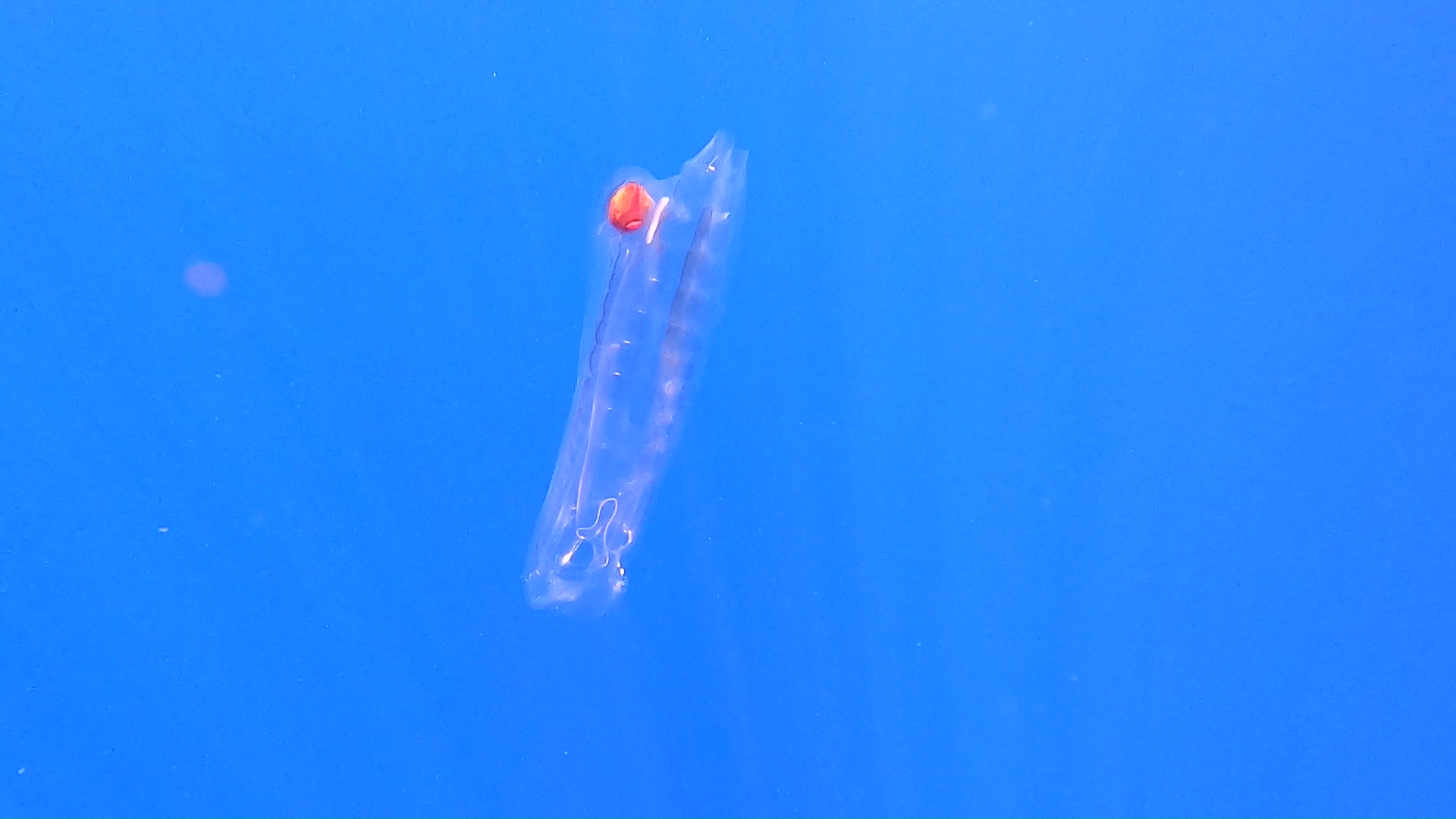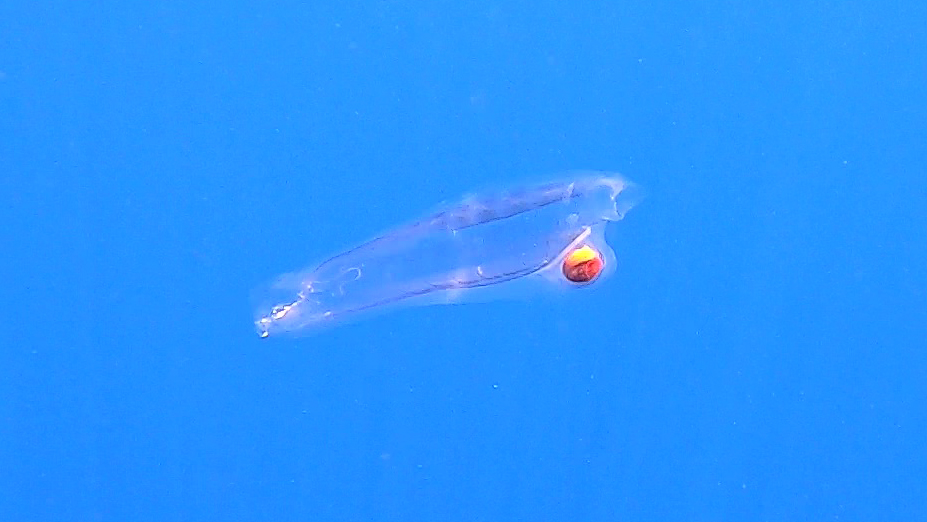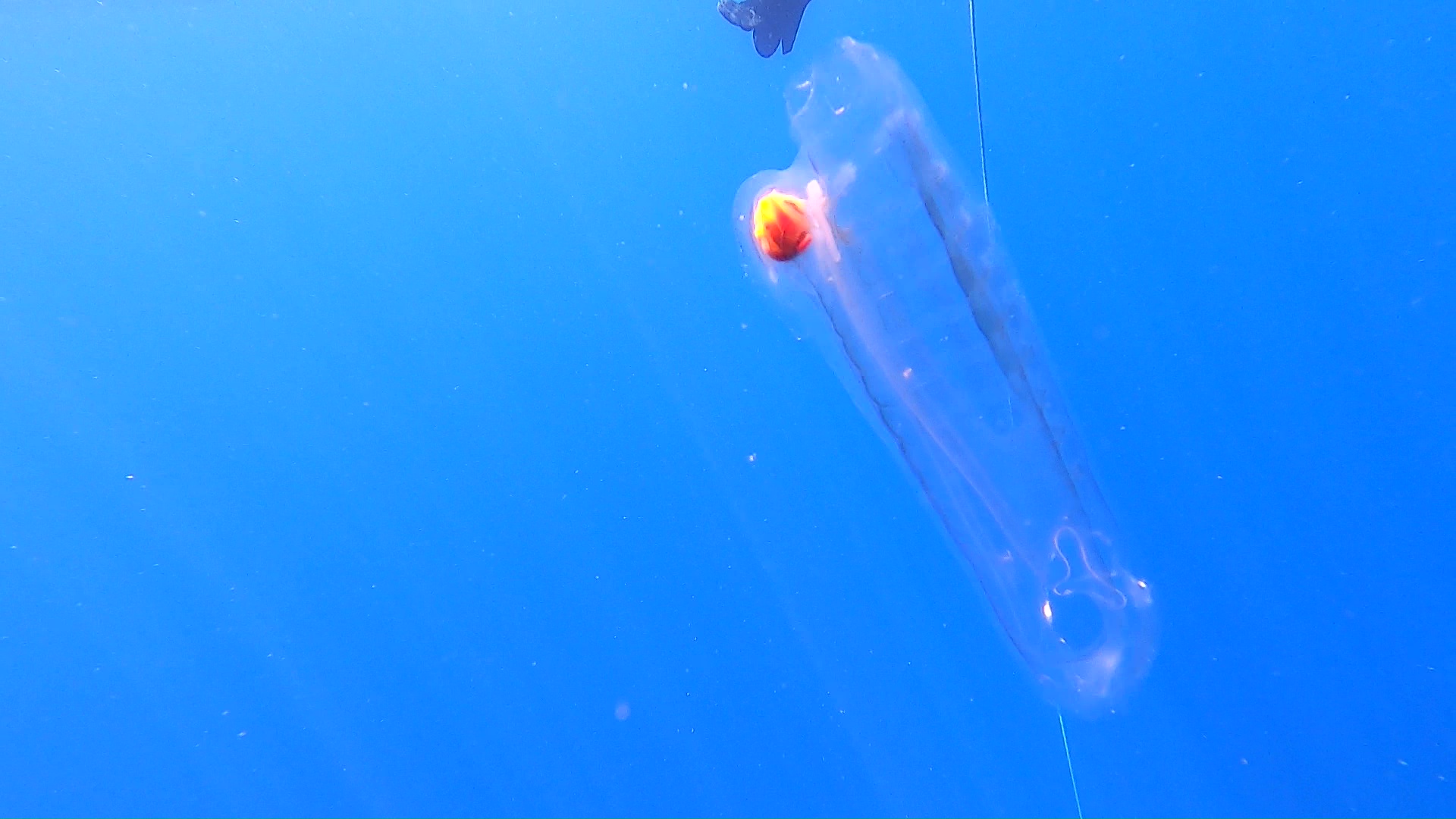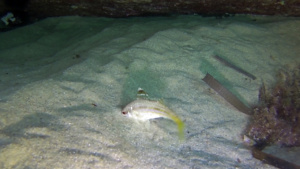Salpa maxima also arrived in the upper Tyrrhenian Sea or lower Ligurian Sea, that is, in the waters of Livorno and the province where we often dive. It is a Tunicate; at first sight it looks like a cross between a fish and a jellyfish but it is neither, it is actually a transparent invertebrate belonging to the order of the Salpidae subphylum Tunicata, coming from the deepest oceans and very rare in the Mediterranean.
It is therefore one of the many alien species but its presence seems a positive event that should not scare us or worry us but rather cheer us up because this species seems to be a great good for the marine ecosystem, they are nicknamed the ‘cleaners from the sea’ because they capture the carbon dioxide present in the water and accumulate it on the seabed, thus contributing to the protection of the marine environment and to counteract the effects of pollution.
They are also not stinging and dangerous for humans. Quite the contrary: they are filtering animals of vegetable particles, therefore, very precious for the health of the sea. They are pelagic organisms, which means that they carry out most of their life cycle far from the sea floor.
So if you see them do not kill them but observe them and photograph them because they are a rare species for our sea. We met her after a dive about 5 miles off the coast at the end of decompression and we were lucky enough to film her by squeezing the last amps from the batteries of our flashlights and webcams.
Searching for some news on the web we have seen that in these days there have also been sightings in Calabria and Campania in the waters of Punta Campanella, so it is a generalized event that could make us think of a good episode of Biodiversity and not the usual alarm of invasion of alien species.
The salps (Salpida Forbes, 1853) are an order of the Taliacei. They move by contracting, pumping water through the gelatinous body and feeding on phytoplankton which is filtered by the pumped water. They are therefore planktonic and filtering organisms.
Distribution Salps are common in equatorial, temperate and cold seas where they can be seen on the surface, alone or in long colonies. The greatest concentration of salps is found in the Southern Ocean where they are sometimes more abundant than krill. Since 1910, as the krill population has begun to decline, the salpe population appears to be increasing. They have been seen in increasing numbers along the Washington coast. In the summer of 2019, they were also seen in abundant quantities in the Ionian sea and more precisely on the beaches of the Taranto coast.
Description Animals with a transparent and gelatinous structure, endowed with primitive muscle bands (hemimials). In the course of their evolution they have lost their chord and developed a tubular-shaped digestive system.
Salps have a complex life cycle, with an obligatory alternation of generations. Both portions of the life cycle exist simultaneously in the sea. The solitary life stage, known as the oozoid, is a single animal that reproduces asexually creating a chain of hundreds of individuals. The chain forms the aggregate phase of the life cycle, known as the blastozoid. Individuals in the chain remain attached to each other, and each grows and reproduces sexually (blastozoids are sequential hermaphrodites). The resulting oozoids are then released to restart the cycle. The alternation of generations allows a short inter-generation time. When phytoplankton is abundant, this leads to rapid increases in the number of blooms that end when there is no longer enough nourishment.
https://it.wikipedia.org/wiki/Salpida Gallery
 English
English Italiano
Italiano






